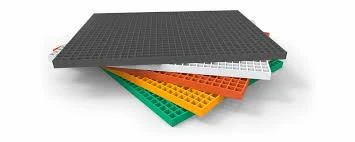
-
 Afrikaans
Afrikaans -
 Albanian
Albanian -
 Amharic
Amharic -
 Arabic
Arabic -
 Armenian
Armenian -
 Azerbaijani
Azerbaijani -
 Basque
Basque -
 Belarusian
Belarusian -
 Bengali
Bengali -
 Bosnian
Bosnian -
 Bulgarian
Bulgarian -
 Catalan
Catalan -
 Cebuano
Cebuano -
 China
China -
 China (Taiwan)
China (Taiwan) -
 Corsican
Corsican -
 Croatian
Croatian -
 Czech
Czech -
 Danish
Danish -
 Dutch
Dutch -
 English
English -
 Esperanto
Esperanto -
 Estonian
Estonian -
 Finnish
Finnish -
 French
French -
 Frisian
Frisian -
 Galician
Galician -
 Georgian
Georgian -
 German
German -
 Greek
Greek -
 Gujarati
Gujarati -
 Haitian Creole
Haitian Creole -
 hausa
hausa -
 hawaiian
hawaiian -
 Hebrew
Hebrew -
 Hindi
Hindi -
 Miao
Miao -
 Hungarian
Hungarian -
 Icelandic
Icelandic -
 igbo
igbo -
 Indonesian
Indonesian -
 irish
irish -
 Italian
Italian -
 Japanese
Japanese -
 Javanese
Javanese -
 Kannada
Kannada -
 kazakh
kazakh -
 Khmer
Khmer -
 Rwandese
Rwandese -
 Korean
Korean -
 Kurdish
Kurdish -
 Kyrgyz
Kyrgyz -
 Lao
Lao -
 Latin
Latin -
 Latvian
Latvian -
 Lithuanian
Lithuanian -
 Luxembourgish
Luxembourgish -
 Macedonian
Macedonian -
 Malgashi
Malgashi -
 Malay
Malay -
 Malayalam
Malayalam -
 Maltese
Maltese -
 Maori
Maori -
 Marathi
Marathi -
 Mongolian
Mongolian -
 Myanmar
Myanmar -
 Nepali
Nepali -
 Norwegian
Norwegian -
 Norwegian
Norwegian -
 Occitan
Occitan -
 Pashto
Pashto -
 Persian
Persian -
 Polish
Polish -
 Portuguese
Portuguese -
 Punjabi
Punjabi -
 Romanian
Romanian -
 Russian
Russian -
 Samoan
Samoan -
 Scottish Gaelic
Scottish Gaelic -
 Serbian
Serbian -
 Sesotho
Sesotho -
 Shona
Shona -
 Sindhi
Sindhi -
 Sinhala
Sinhala -
 Slovak
Slovak -
 Slovenian
Slovenian -
 Somali
Somali -
 Spanish
Spanish -
 Sundanese
Sundanese -
 Swahili
Swahili -
 Swedish
Swedish -
 Tagalog
Tagalog -
 Tajik
Tajik -
 Tamil
Tamil -
 Tatar
Tatar -
 Telugu
Telugu -
 Thai
Thai -
 Turkish
Turkish -
 Turkmen
Turkmen -
 Ukrainian
Ukrainian -
 Urdu
Urdu -
 Uighur
Uighur -
 Uzbek
Uzbek -
 Vietnamese
Vietnamese -
 Welsh
Welsh -
 Bantu
Bantu -
 Yiddish
Yiddish -
 Yoruba
Yoruba -
 Zulu
Zulu
frp stub flange
Understanding FRP Stub Flanges A Comprehensive Overview
In modern engineering, composite materials have gained popularity due to their superior strength-to-weight ratios and corrosion resistance. One such material is Fiber Reinforced Polymer (FRP), which has become a crucial component in various industries, including construction, maritime, and chemical processing. Among the main components in FRP applications are stub flanges, which play a vital role in connecting piping systems. This article delves into the characteristics, advantages, and applications of FRP stub flanges.
What are FRP Stub Flanges?
FRP stub flanges are specialized components used to create joints in piping systems, especially when one pipe needs to be connected to another or to a fitting. They are designed as short sections of pipe with a flange on the end, allowing for an easy and effective interface for attachments. Typically, FRP stub flanges consist of layers of fibers, such as glass or carbon, embedded in a polymer resin, which can be tailored to resist various environmental factors.
Advantages of Using FRP Stub Flanges
1. Corrosion Resistance One of the most significant advantages of FRP stub flanges is their exceptional resistance to corrosion. Traditional materials like steel can succumb to rust and other forms of degradation when exposed to moisture or reactive chemicals. In contrast, FRP materials are impervious to a range of corrosive substances, making them ideal for use in chemical processing plants or maritime environments.
2. Lightweight Design FRP stub flanges are considerably lighter than their metal counterparts. This lightweight nature not only simplifies installation but also reduces the overall load on the supporting structures. This is particularly beneficial in applications where weight is a critical factor.
3. Low Thermal Conductivity When using metallic parts, thermal conduction can lead to energy losses and potentially harm the integrity of adjacent structures. FRP stub flanges have low thermal conductivity, minimizing heat transfer and improving energy efficiency in various applications.
frp stub flange

4. Customizability FRP materials can be manufactured in a variety of shapes, sizes, and colors, allowing engineers to customize stub flanges according to specific project requirements. This versatility can enhance the aesthetics of a project while ensuring that technical specifications are met.
5. Longevity FRP materials typically exhibit excellent durability and longevity, reducing the need for frequent replacements and maintenance. This can result in lower operational costs over the lifespan of a project.
Applications of FRP Stub Flanges
The application of FRP stub flanges spans many industries due to their unique properties. Some noteworthy examples include
- Chemical Processing In chemical plants where harsh chemicals are handled, FRP stub flanges are used to prevent leaks and corrosion, ensuring safe and efficient operation. - Water and Wastewater Management These flanges are commonly used in water treatment facilities, where resistance to corrosion is essential, given the presence of various pollutants. - Marine Applications In ships and offshore platforms, FRP stub flanges provide reliable connections that withstand the harsh saline environment, extending the life of the systems. - Pharmaceutical Industry In pharmaceutical manufacturing, hygiene and resistance to contamination are paramount. FRP materials meet these stringent requirements, making them suitable for such applications.
Conclusion
The advent of FRP stub flanges marks a significant improvement in the field of piping systems, offering numerous advantages over traditional materials. Their exceptional resistance to corrosion, lightweight design, low thermal conductivity, and reliability contribute to their widespread adoption across various industries. As technology and engineering continue to evolve, FRP stub flanges will likely play an increasing role in future infrastructure and manufacturing projects, paving the way for more efficient and durable engineering solutions. This shift not only enhances performance but also promises more sustainable practices in managing resources and minimizing environmental impacts. As industries continue to evolve, the use of FRP stub flanges will undoubtedly be a key factor in the drive toward innovation and excellence.









